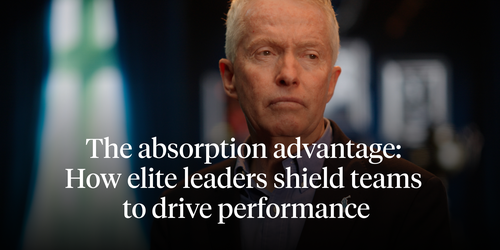
Article

Savvy organizations know that improving employee engagement is an ongoing process. Some articles may offer expert tips and top ten lists to boost engagement fast, but the truth is, there’s no quick fix. Improving engagement takes time, but the good news is that we can guide you through the process.
In this article, we’ve outlined how to increase both employee satisfaction and employee retention. We’ll walk you through it step-by-step, so you can focus your efforts and achieve the kind of real change that creates highly engaged company cultures.
To increase the number of engaged employees at your organization, don’t think of employee engagement as a one-time project. Instead, look for sustainable, ongoing solutions.
To get started, we recommend using an employee feedback loop. This is comprised of three parts (which we’ll discuss in more detail later in this article):
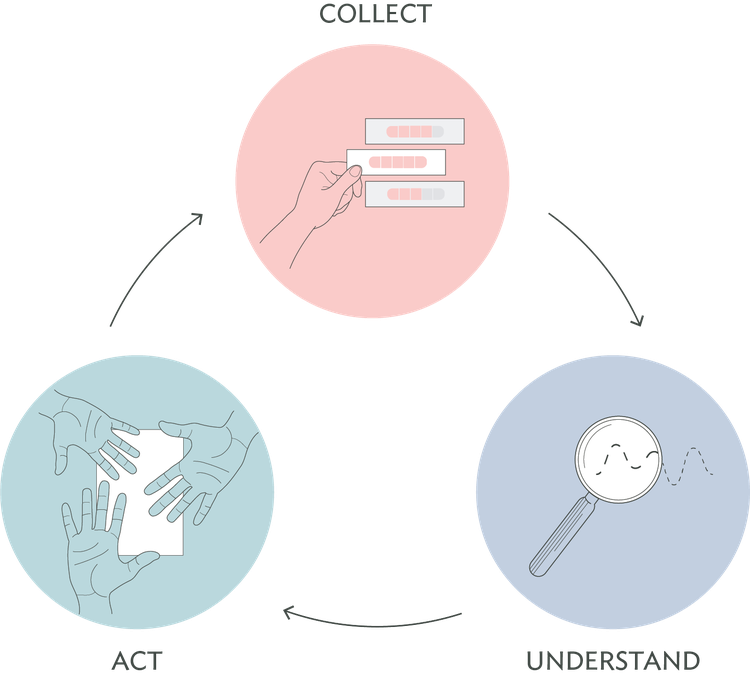
The cadence of this process is up to you and will be guided by how quickly you can move through each step.
This first step is to collect data, like employee feedback and sentiment, using an employee survey. Depending on your current pain points, you may want to focus your survey around a specific topic (i.e., wellbeing, DEI, etc.). However, we generally recommend beginning with an employee engagement survey, as this survey type focuses on the measure you most want to improve: engagement.
We've written extensively on how to collect data, and to save you time, we've compiled a few resources for you here:
Once you’ve collected the completed surveys, it’s time to start analyzing the feedback your employees have shared. The main tool for understanding this data is a statistical technique called driver analysis.
It’s easy to assume that taking action on a factor with a low score – say work/life balance – will help lift engagement. But, if work/life balance isn’t something that drives engagement at your company, investing in this area won’t make a difference to engagement levels.
Drivers are the actions your survey determines are most likely to move the needle on a particular outcome. In this case, the outcome you’re hoping for is improving workplace engagement. Culture Amp’s real-time driver analytics engine allows you to quickly and efficiently see what aspects of organizational culture have the biggest impact on employee engagement. Tools and platforms like these make it easy to understand what drives engagement at your company, and which questions you can ask to measure and assess it.
Each company can have different drivers of engagement, and they can change over time. A good survey will identify the top drivers for you. Once you have those, you’re ready for the next step in the feedback loop – action.

After years of working with companies that put culture first, we’ve learned a lot about how these organizations stay on top of their game. One of the main things culture-first companies do differently is that they consistently drive meaningful change by doing less rather than more. They also take the time to communicate to their employees why they’re taking a certain action.
When it comes to increasing employee satisfaction, culture-first organizations don’t choose five, or even three, drivers to build their engagement initiatives on. They choose one, maybe two, at a stretch. This ensures that the actions they take have maximum impact.
Challenge yourself to choose a specific focus area. These three steps can help guide leaders at all levels of the organization:
Once you have your focus area for improving employee engagement, you can start action planning.
Let’s say, for example, you identified that collaboration is a high driver of engagement. You could start by framing your focus area as a forward-looking question. We find that the “How might we…” formula is very effective.
For our example, the question could be:
How might we improve collaboration across organizational boundaries?
At this point, it can also be useful to dig a little deeper with your employees to find the root cause of the issue. You could set up a quick follow-up survey about your focus area, or run an in-person workshop.
You can ask employees:
Then, it’s time to come up with creative ideas to address the focus area to improve engagement. Involve employees in this process. Consider asking for volunteers from across the business so you’ll have a cross-section of employees who feel personally connected to the process.
Remember: Real improvement in employee engagement requires you to push through and bring all that planning to life through action. Don’t be afraid to test ideas – holding out for the perfect approach can lead to inaction. Instead, go ahead and get started. You can easily communicate progress on actions, gather feedback from employees, and make any necessary adjustments along the way.
In the next section, we share some useful real-life examples to give you ideas on how to get started. You could also check our inspiration engine, which we created for this express purpose.
Every year, Culture Amp analyzes data captured from over 4,500 organizations to assess what is driving employee engagement. In 2023, we found that the top drivers of employee engagement across industries are:
Each company chooses to take action on these drivers in a slightly different way. However, we felt it would be useful to provide three insights into what real-life companies have done.
Vend identified learning and development as a high driver of engagement. In their June 2016 engagement survey, 79% of the company’s employees favorably rated the statement: “I have access to the learning and development I need to do my current job well.”
To continuously improve on this factor, Vend leadership began empowering people to make decisions that fit with their careers and encouraging managers to have conversations with their teams about individual learning and development.
You can read the full Vend case study here.
JacTravel identified leadership communication as a high driver of employee engagement. “What we heard from the survey was there wasn’t enough explanation from the leadership of the course we’re on and why we’re on it,” says Deputy Chief Executive Officer Peter Clements.
To address this, he arranged a series of meetings across the company’s global offices to spend time talking with employees. “It was a really constructive and informative period that helped bridge the gap between the executive team and people within the business. Off the back of that, we’re enacting a number of initiatives around communication and engagement,” he says.
Another organization Culture Amp works with holds frequent project retrospectives. These allow teams to work together to identify mistakes, share what went well, and ultimately, apply what they’ve learned toward the next project.
For larger teams, the company scales retrospectives using a few additional steps. First, they identify and train a team of facilitators. Then, those facilitators perform focus groups around standardized themes with project team members. Next, the facilitators compare notes. Finally, the themes are presented at an all-hands meeting to share learnings and get feedback.
It’s clear that the world of work is changing. Hybrid work models are continuing to evolve, while the proliferation of AI has brought the kind of disruption that mimics the tech boom of the 2010s.
As you build a sustainable employee engagement strategy, keep an eye on these and other workforce trends, and adapt your practices to continue providing your employees with the best workplace possible. At Culture Amp, we’ve tapped into our data lake of over 1.3 billion data points to spotlight a few trends we believe could impact how engaged employees may be in the future:
Faced with layoffs, re-orgs, and shrinking budgets, many workplaces find themselves trying to do more with less, and this can have negative effects on the employee experience.
According to our data, employee motivation and wellbeing remain at troublingly low levels, signaling some truth to the idea that employees are restricting the amount of energy they give to work.
About one in every two employees disagrees with the statement: “I rarely feel overstressed at work.” Plus, since 2020, our data shows a 6% point decrease in employees agreeing that their workplaces prioritize employee wellbeing.
As companies grapple with reduced budgets and employees are less likely to consider work a primary source of their identity, leaders can try experimenting with more part-time or contract positions. These roles may offer a way to renegotiate what work looks like, providing flexibility for employees and cost-efficiency for organizations.
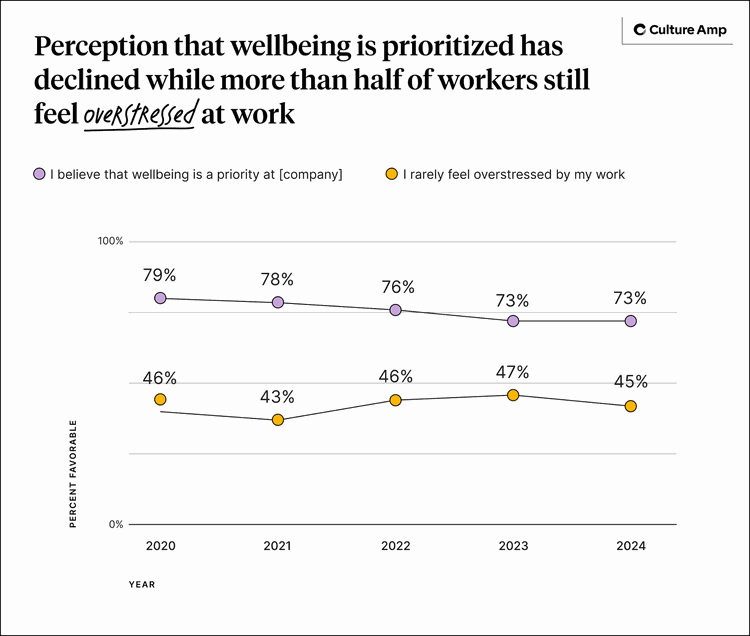
Confidence in leaders has been steadily declining, yet its influence as a driver of employee engagement remains strong.
Employee satisfaction hinges on having strong, capable leadership at all levels of the organization. However, for leaders who feel pressured to meet every expectation, this creates a near-impossible standard – one that cannot be sustained.
So, what is the path forward? Sustainable leadership isn’t about doing less, but rather about focusing on what matters most. We recommend that leaders co-create priorities with their teams, using employee experience data to align their efforts with organizational goals.
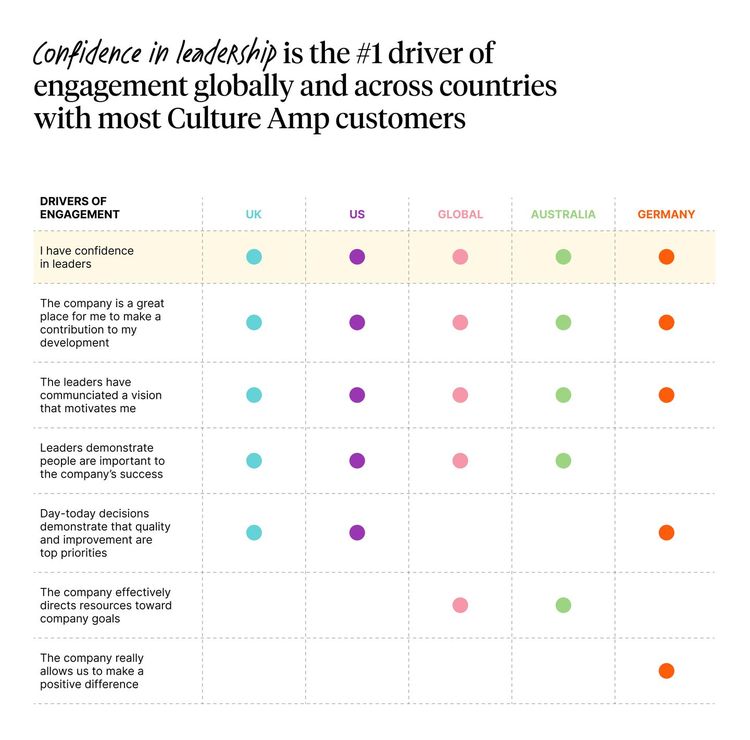
Everyone has experienced the struggle of trying to find a critical piece of information just when it’s needed.
This is an everyday reality for countless employees; yet, for years, systems and processes have been a low-scoring factor – without improvement – while also showing up as a strong driver of engagement.
Many employees already use LLM tools independently to streamline their personal workflows and it would be a natural evolution for organizations to begin introducing AI tools designed for intentional internal use. When used right, Gen AI tools can dramatically improve workflows, eliminate inefficiencies, and make information available in seconds. Companies that implement these tools strategically could see employee favorability rise, especially around long-standing pain points like systems and processes.
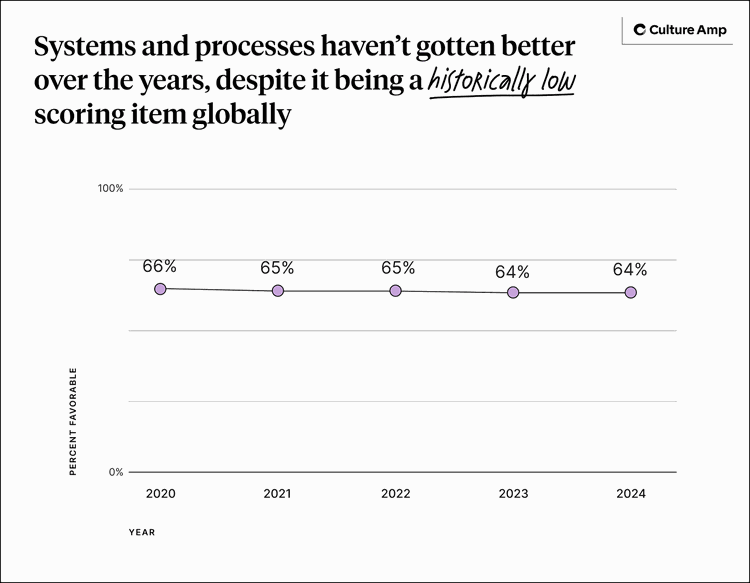
Improving employee engagement isn’t something you can accomplish overnight, but if you take it one step at a time, you can achieve the results you’re looking for. All you need is the right tools and a logical process. As with many things, practice makes perfect. So don’t forget to start that feedback loop again when the time is right!